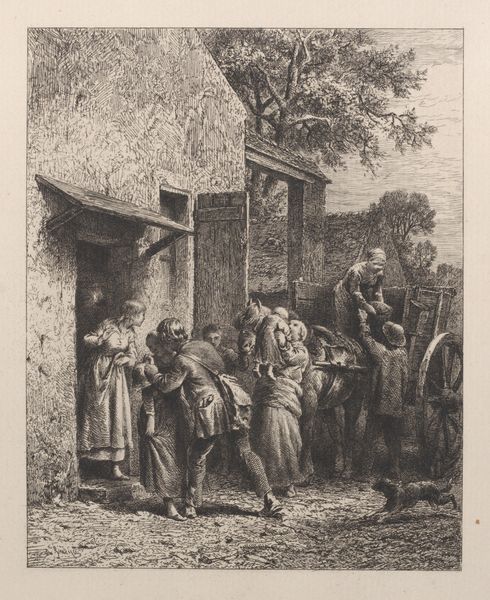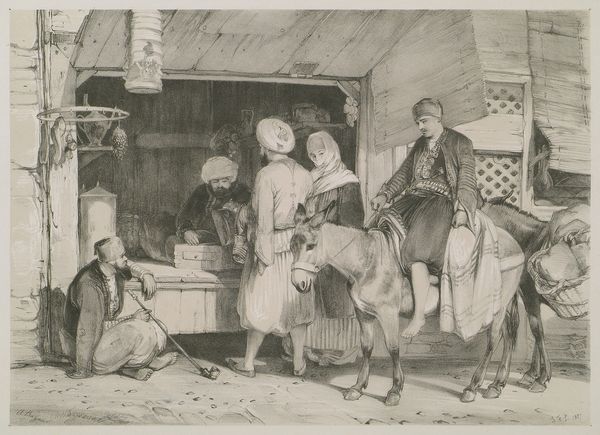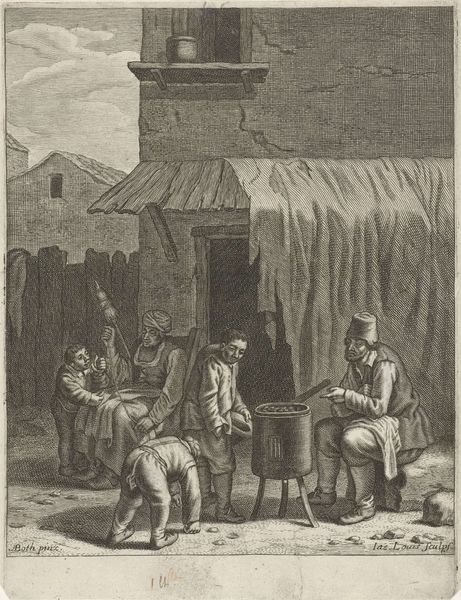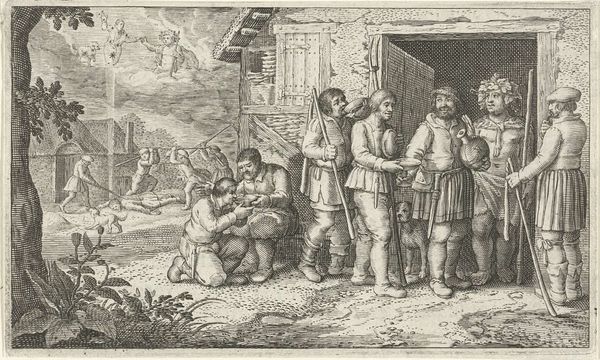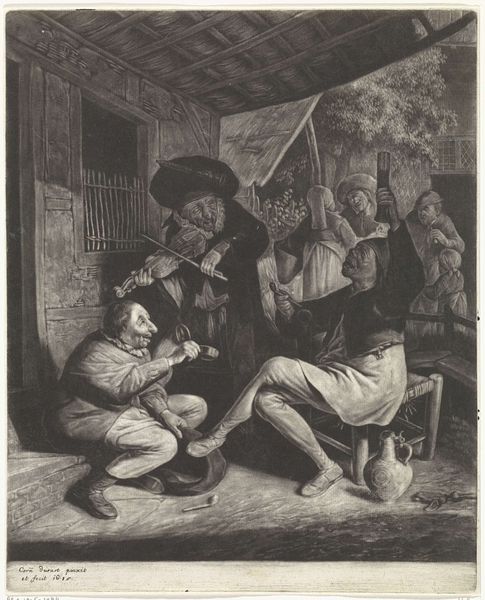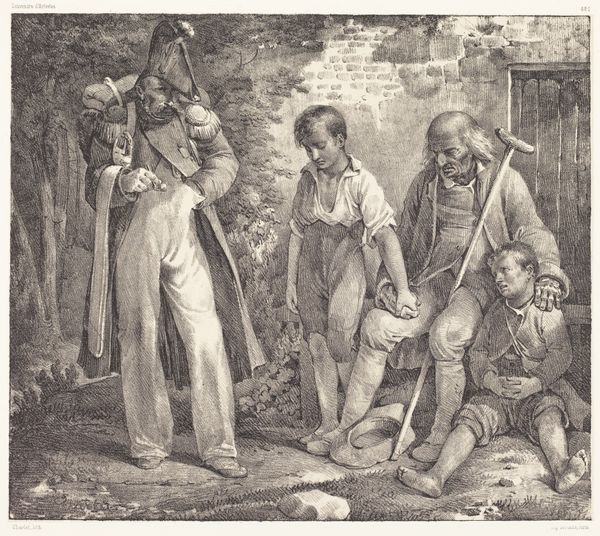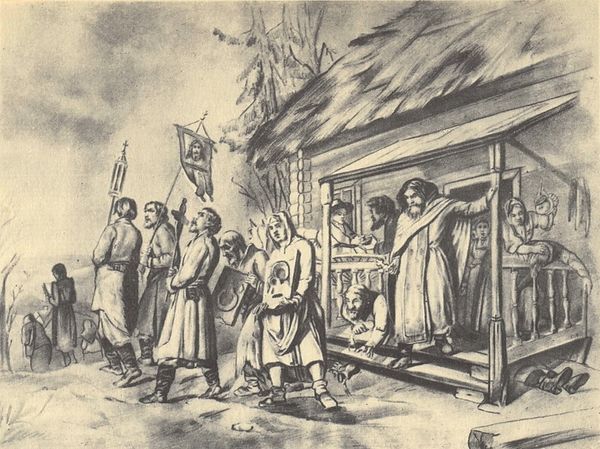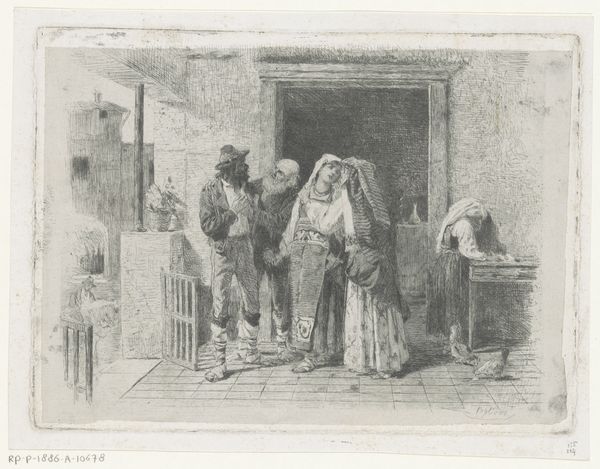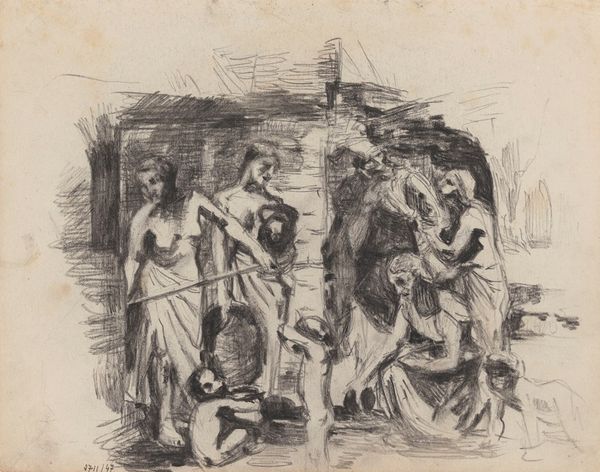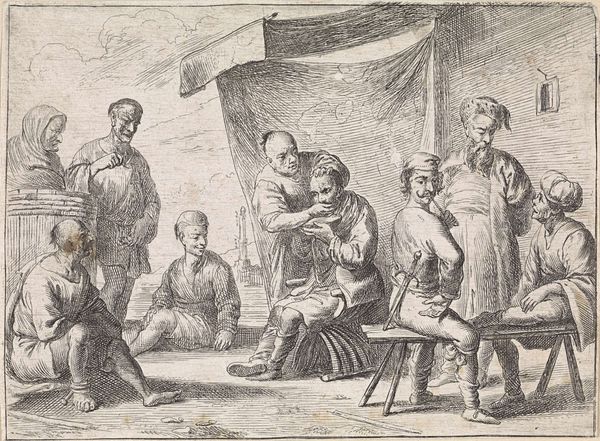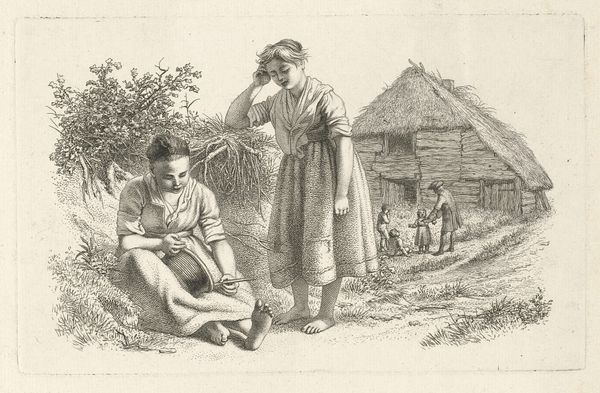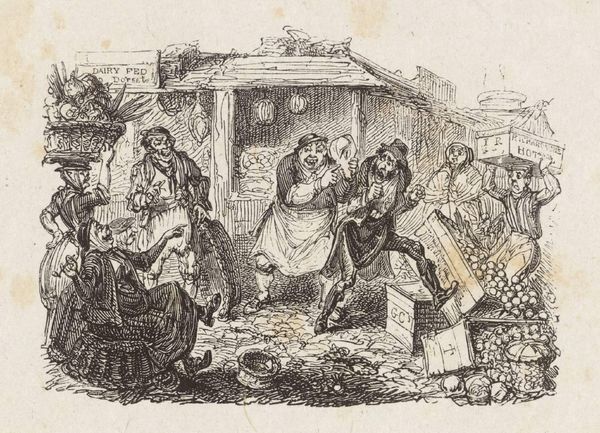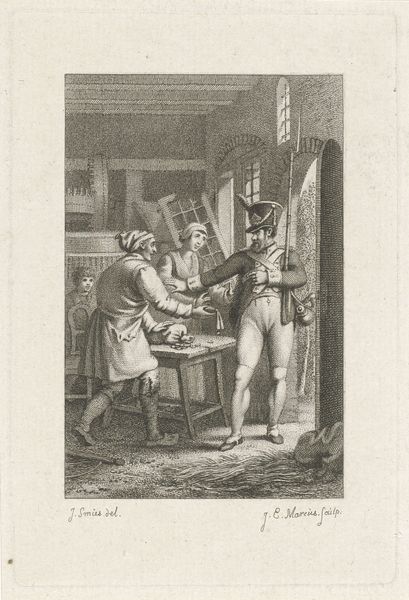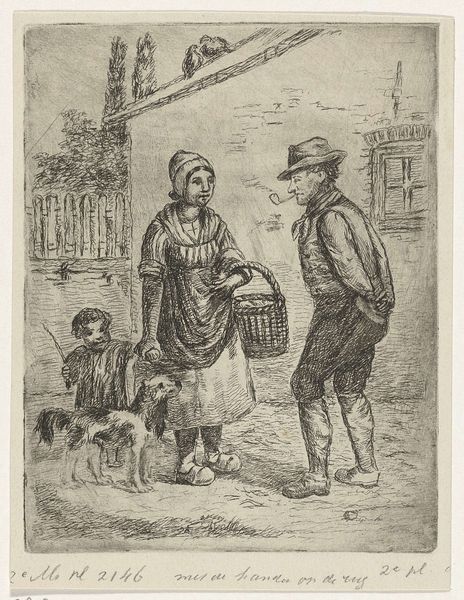
print, etching
# print
#
etching
#
landscape
#
romanticism
#
genre-painting
Dimensions: 302 mm (height) x 226 mm (width) (bladmaal)
Editor: This etching, "Scene Outside a Consumption Booth," created in 1831 by Wilhelm Marstrand, really strikes me. It has this unsettling blend of everyday life and almost predatory energy, with the men crowding around the woman. What's your read on this? Curator: I see a depiction deeply rooted in the gender politics of 19th-century Denmark. Look at the title itself – a "consumption booth," likely a place where goods were sold. This public space becomes a site where the woman's body is, in essence, consumed by the male gaze. Consider the composition; the men hem her in, their hats acting almost like a wall. What do you think Marstrand is suggesting about female agency in such environments? Editor: That's a chilling thought! I hadn't considered how the space itself dictates the power dynamics. It feels like she’s trapped in a tableau of their making, even the dog is pleading at her feet, mimicking their poses. Curator: Exactly! And it's crucial to note Marstrand’s potential commentary. Was he celebrating this dynamic or critiquing it? Romanticism often idealized such scenes, but his rendering feels pointedly ambiguous. Could he be subtly denouncing the restrictions placed upon women within the burgeoning consumer culture? Where does power reside within this composition, and who truly benefits from the 'consumption' being depicted? Editor: Wow, I didn't think of it that way. It's much more complex than just a genre scene. It is a glimpse into a system, right? Curator: Precisely. It forces us to confront the uncomfortable realities of how societal structures, even in seemingly innocuous settings, perpetuate imbalances of power and the limited mobility of women. Editor: It's amazing how a simple scene can reveal such complex cultural dynamics. I definitely see this artwork in a completely new way now. Thanks! Curator: It’s through this kind of analysis that art history gains true relevance. Always keep questioning what appears at first glance to be ordinary.
Comments
No comments
Be the first to comment and join the conversation on the ultimate creative platform.
